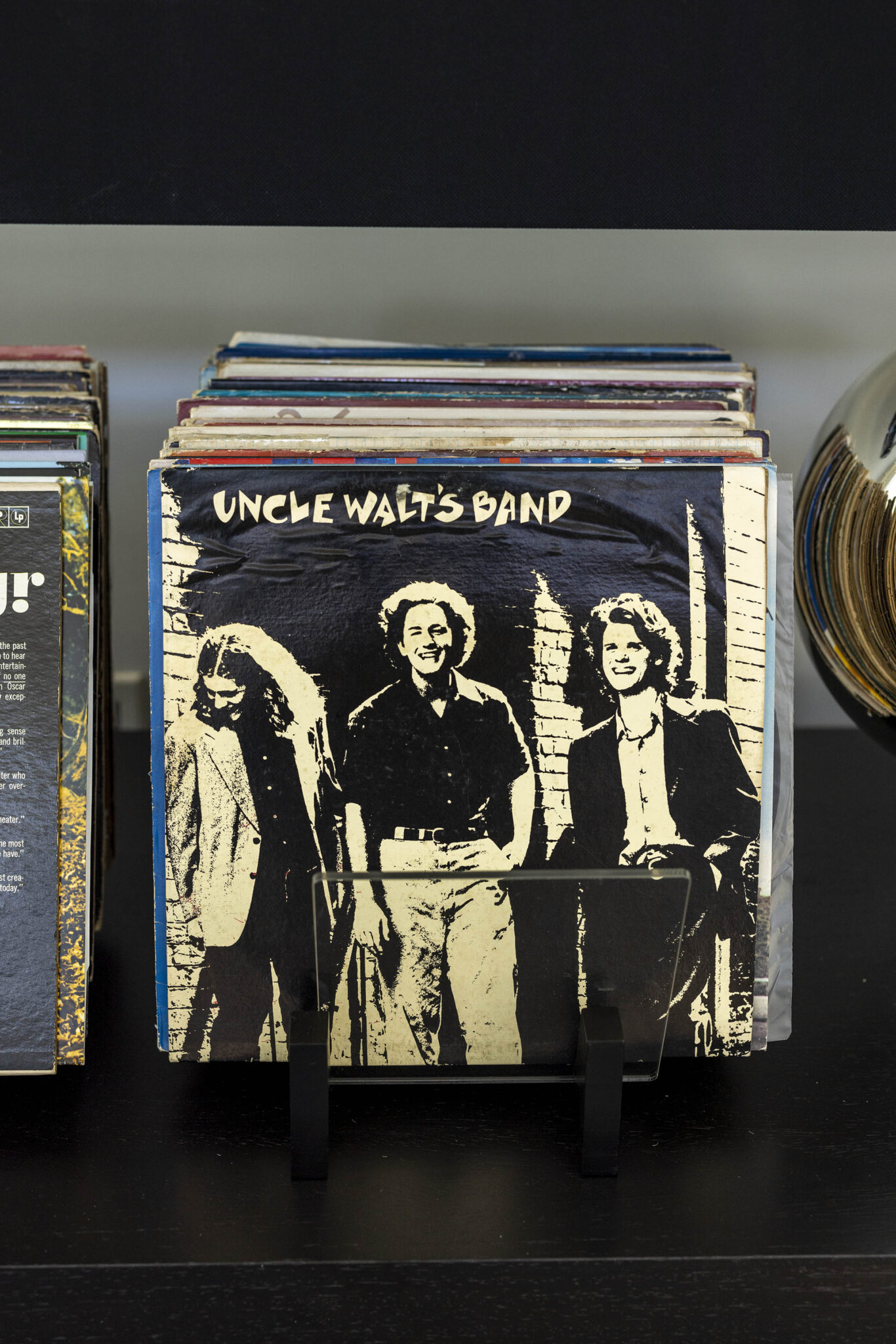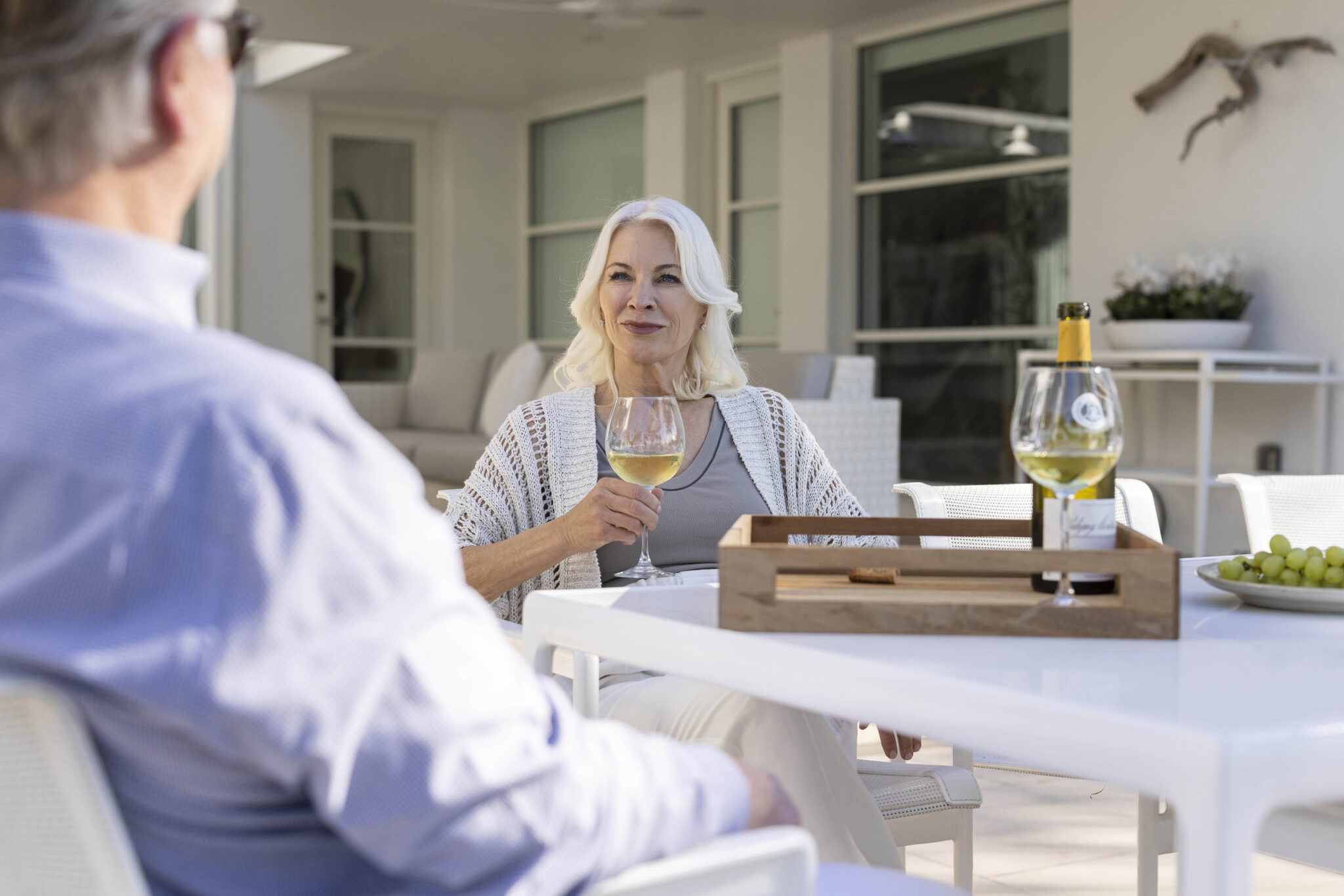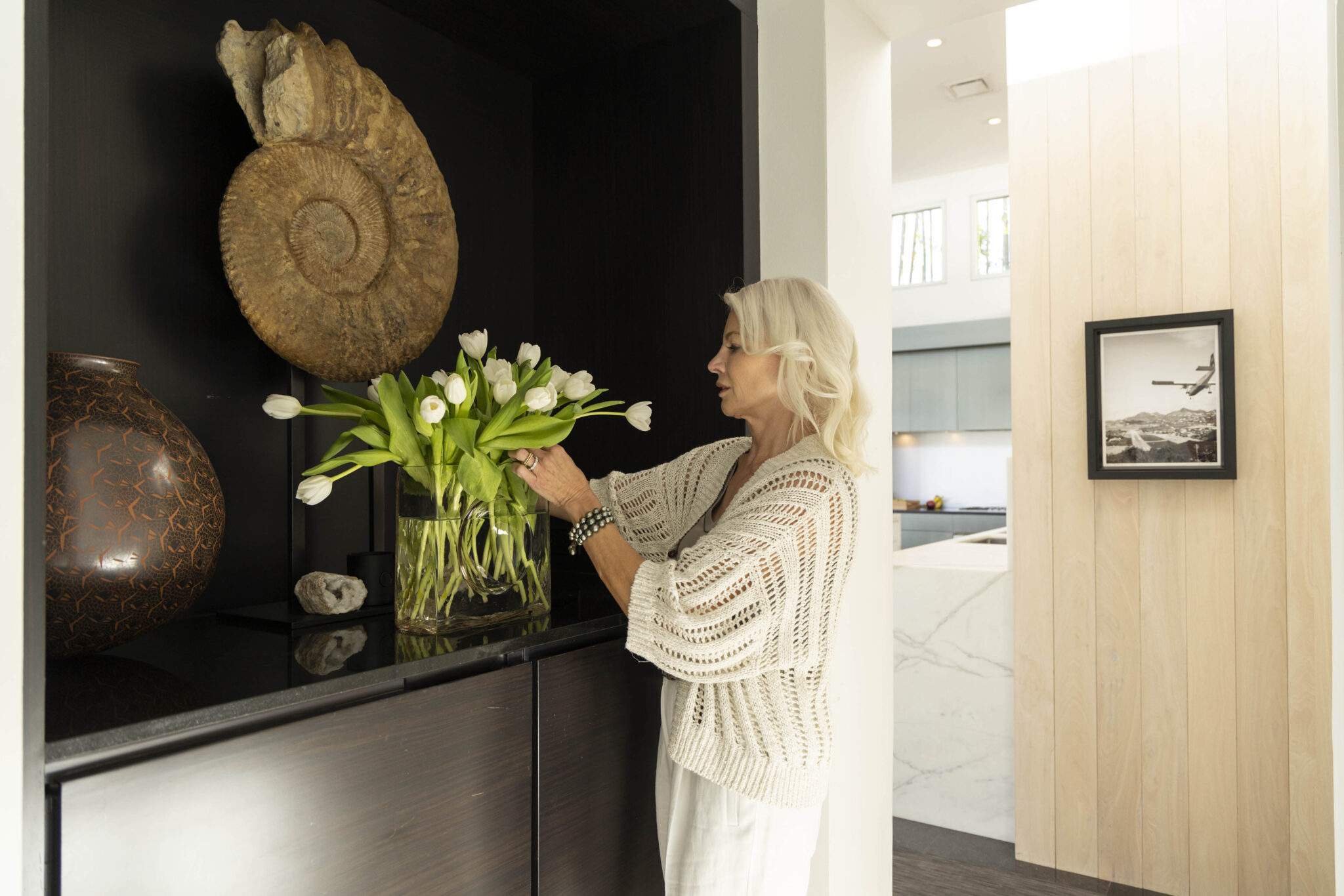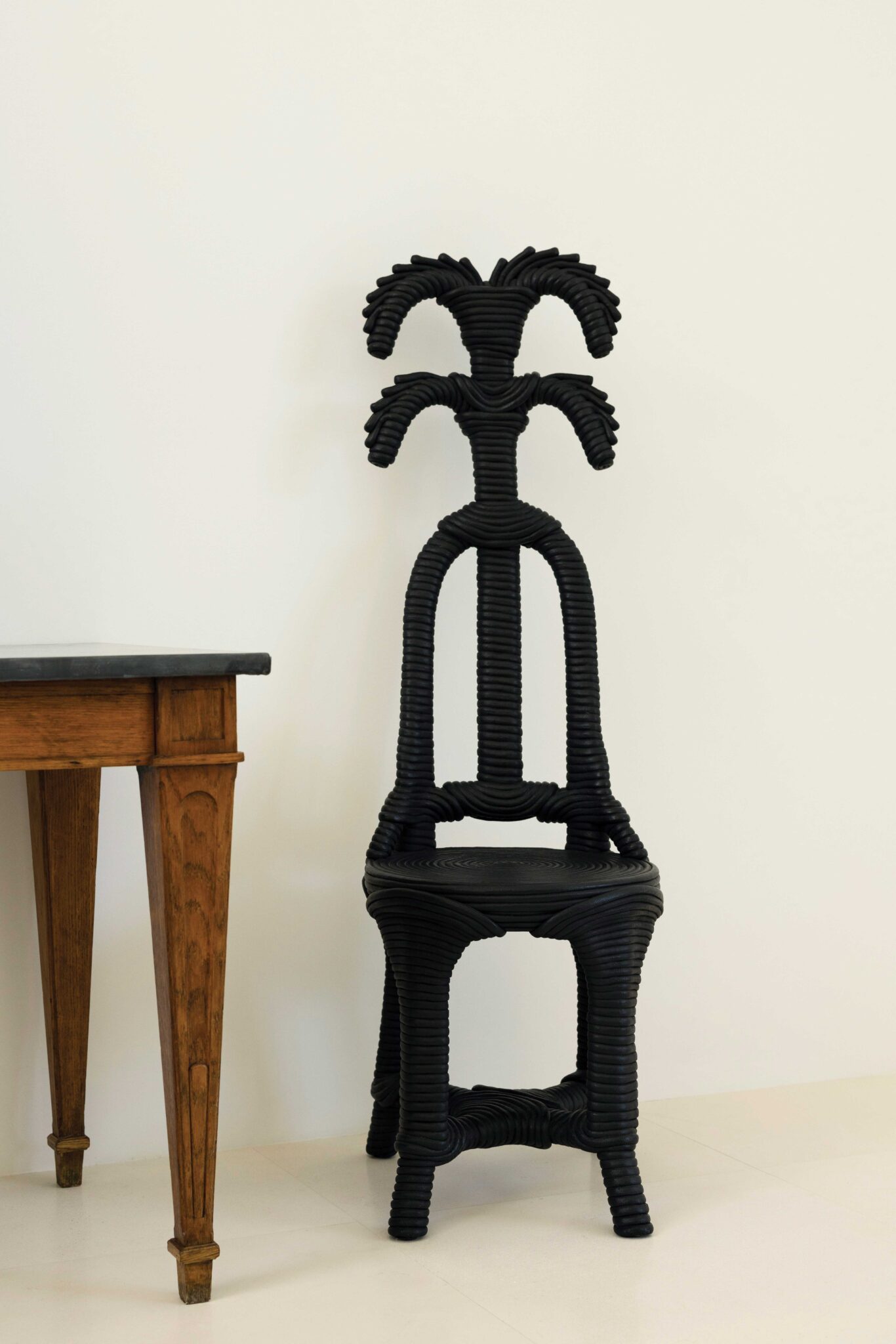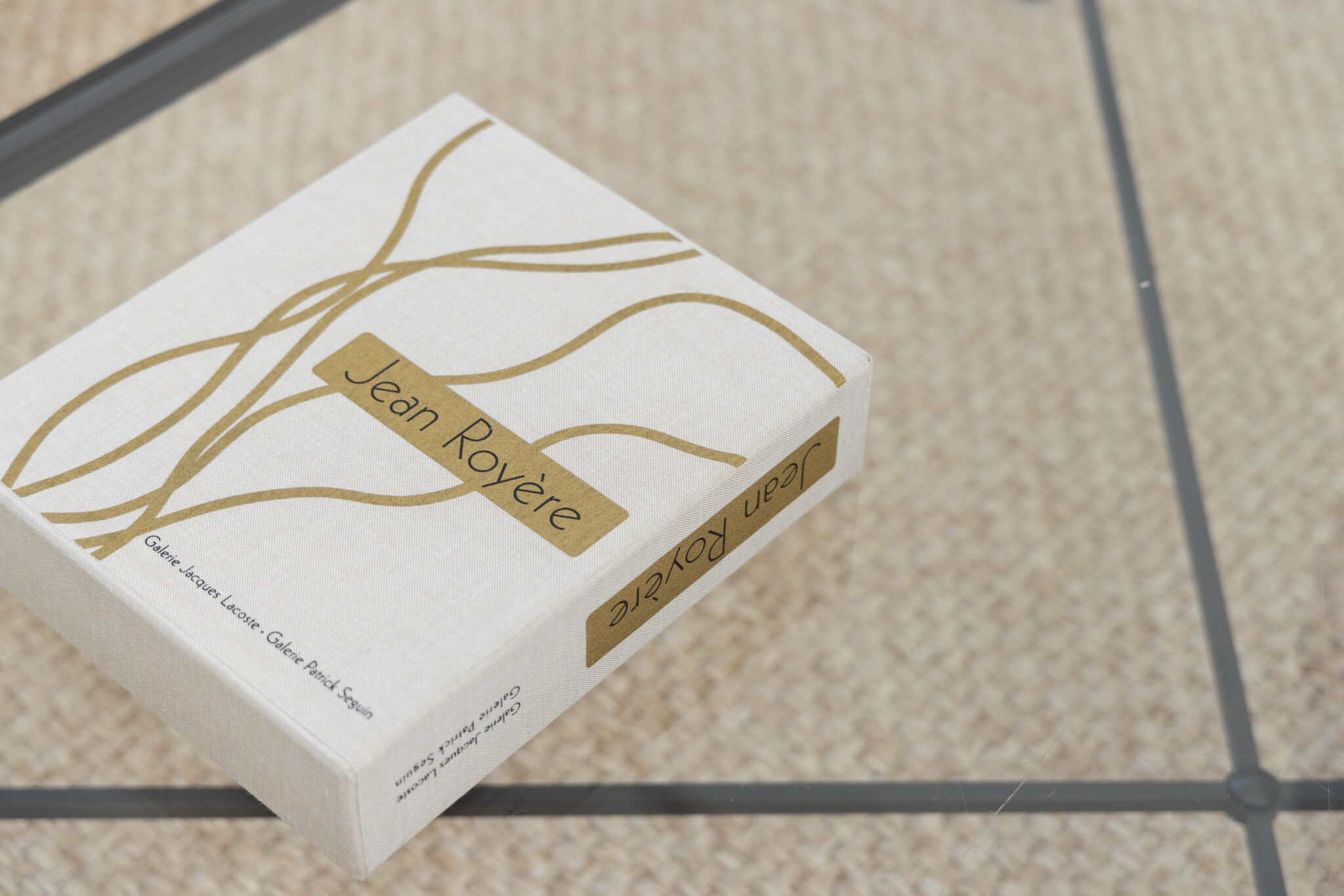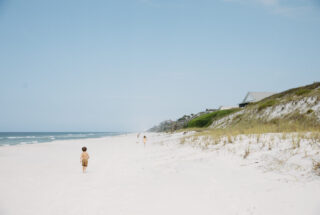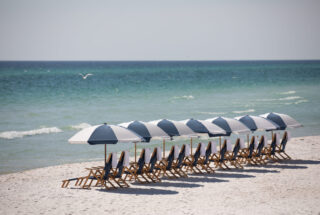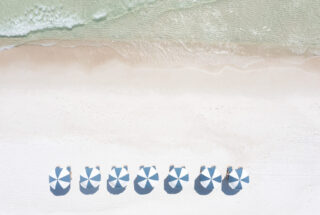A young couple meets on a beautiful Florida beach. They drive 30A in an old Volkswagen, getting to know each other while exploring what was then untouched and rugged terrain. They go to school and study form and function and beauty. They do it all side by side. They load up that old Volkswagen and follow the path of their interests and passions. They drive around until they see a place they’d like to land. They watch as life begins to roll into the untouched and rugged and they employ their gifts, becoming part of the developing landscape, working to ensure that this exquisite place retains its beauty. They like art and books and music and driving around Europe. They treasure their family, they love their work. They like the water, they give back to their communities, and you know they throw great parties.
Meet Walt and Sandi Chancey of Chancey Design. Walt, an architect, and Sandi, an interior designer, will be married thirty-nine years this year. They’ve worked side by side every day they’ve known each other. Work and life intertwined and connected by what is beautiful. Their designs for their clients are pragmatic in that they prioritize spaces that make sense first. The form then follows the function. When the pieces are in place, what they have given their clients is space for the art of living ---- a pursuit the Chanceys themselves have practiced and perfected.


Cassie Condrey: Let’s start with how you work together and your background as a couple and a design team.
Walt Chancey: We have a long history with Walton County and 30A. I grew up in Enterprise, Alabama, and my family had one of the first vacation homes built in the early 1950s on Inlet Beach. I was the baby of six. All my summers up until I was an early teenager were spent on Inlet Beach. And of course, that was when there was absolutely nothing there; we’re talking about the early ’70s. After graduating high school, I moved down to work with my brother who was an architect, but he also owned the Spinnaker, which was a very well-known nightclub in Panama City Beach. He was one of the founders. And that is where Sandi and I met, on the beaches there many years ago, bartending. I had a four-year gap period from high school. And so I had just gone back to Auburn to study architecture. Sandi ended up with me at Auburn where she fell in love with the interior design program. We came back to the beaches for all our summers, spent time down there, working our way through college at the Spinnaker bartending. In the spring and summer and weekends we would drive down and work all weekend, and then, with some money in our pockets, drive back Monday morning at 4 a.m. and go back to school.
Sandi Chancey: 30A was our little getaway from Panama City Beach. We’d take his old Volkswagen convertible and find a little cut to get to the beach where we’d spend the whole day. Nothing was there. It was just our little private oasis. And one day we saw this beautiful gazebo pop up, and I said, “Oh my gosh, somebody actually does architecture here.” That was the beginning of what 30A became.
CC: That's amazing. So you really were there from the beginning.
WC: We were there from Day One.
SC: Auburn had architecture, landscape architecture, and interior design all together at the time. So we had all of our design labs for the first two years together. And then in our thesis year, we were able to do a collaborative thesis together.
WC: It was how to design a development in environmentally sensitive areas. As I’m an architect and developer, that kind of hit us early on about the environment and how to design and build in those sensitive sites. The first thing I did out of school was open an office in Panama City for a Birmingham architect and set up practice, but it was slow times. We decided we wanted a city and we looked at Atlanta which was an obvious option where a lot of our friends worked. We had a good friend in Los Angeles where we had a potential job offer, but it was just a little bit too scary. We love the water and love the Gulf Coast and went driving around and pulled into Tampa one day and basically said this is it.
SC: We drove across the bridge and I said, “There’s skyscrapers!” We were very excited.
WC: We just loaded up the Volkswagen, literally strapped everything we could to the top of it, moved here, and got jobs. And about two years in, the firm that we worked for, instead of handing out our Christmas bonuses, announced that they were closing the firm. It was a recession. I had walked back to my desk, was packing my box, and our largest client—this head injury rehabilitation facility on 1000 acres down in Central Florida—called, and he noticed that I sounded despondent and blue, and he said, “What’s wrong?” I said, “Well, the office just closed.” And he said, “What are you going to do?” I said, “Well, I just got my license,” which I had. “I guess I’ll hang out a shingle.” And he said, “Do you want a client?” And I said, “Ray, I absolutely do.” We started in a two-bedroom apartment building here on Davis Islands – Tampa with myself and Sandi and one of the guys that left the firm with us. We started Chancey Design.
Cassie: What a great story.
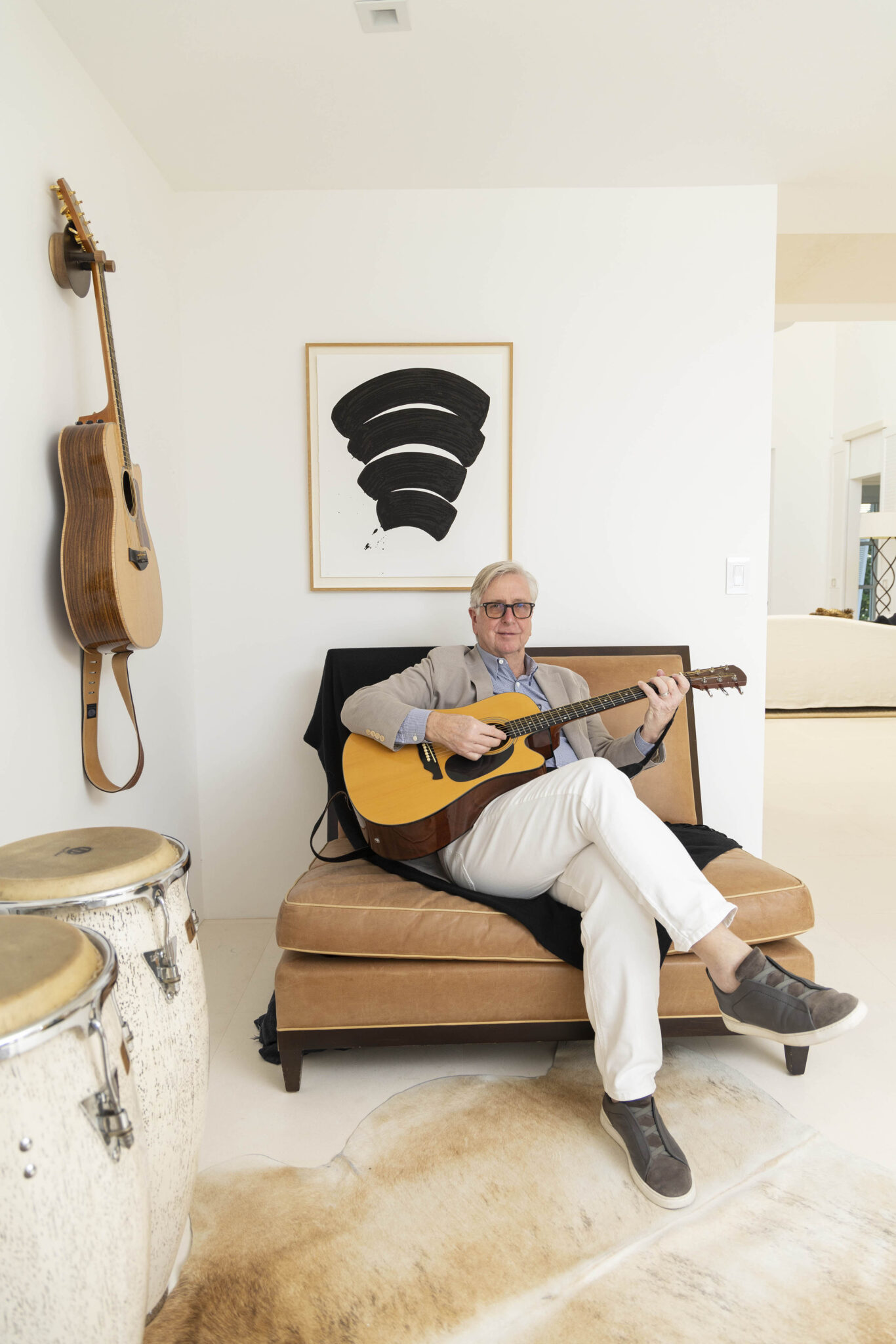

SC: Walt was putting his firm together, and I was still working for my design firm where I designed many corporate offices. It involved a great deal of space planning skills which I became very proficient in. It was about four years there, we hit a recession. Many CEOs of those companies asked if I would do residential design. “My wife needs some help with the house.” I said, “You know, I guess we could do that.” We ended up going over to the residential work then. It always paired well.
CC: It sounds very symbiotic—the two of you, and the ways in which you met, and got started. In looking through your portfolio and online presence, I noticed that you use the word relationship a few times. I was curious of what that meant to you, how you think about your work in terms of relationships.
WC: I think relationships are the most important thing in our life—our family relationships, our friends, and our business. So since our business is our life, our clients became our friends, and our employees and our co-workers became our friends. We’re fortunate to live on a street here that is less than a quarter of a mile long. We built six new homes and renovated another three or four. And all of those people have become our very dear friends. Sandi has a knack for finding friends. She’s very social, very outgoing. We tend to find that either clients have become friends or friends have become clients. When a relationship is so important that it lasts, that means we’ve done a good job. If you can design and build a home with someone, and they’re still your friends after, and very good friends, we feel like we’ve accomplished the best goal that we can.
SC: When we had our last website design, we hired a marketing team to help us. They said, “You know what? Trust. That’s what you’ve got here.” They said, “You’re all about trust.” It’s true. We are gonna follow through on what our client’s needs are, and not let go. The processes are not always in our hands—construction timelines, especially with the pandemic. Everyone has different personalities. For us, it’s just trying to understand our clients, and being patient.
WC: And listening to them. Yeah, it’s their home, it’s not ours. You have to listen well.
SC: People have come to us over the years because they’ve had something that they want, and they want a good architect, but they want to express what they want to express, not what we want. This is a funny story. We had a doctor in Gainesville— he was a psychologist—come to our firm, and he did the Myers-Briggs personality test for all of us. His results showed that Walt and I had the exact same personalities.
WC: And I would have never guessed it. I would have never thought we were the same.
SC: He said he’d never seen two people more alike. It was crazy.
CC: I wonder if it would have been like that when you first met? Or if you became…
WC: Is it nature or nurture?
CC: Yeah, exactly. So how do you take that into the projects that you work on? So you often are doing the architecture work, Walt, and you’re doing the interiors, Sandi?
WC: Yes. So here’s one of our thoughts. The thing that I think we do, maybe differently than many architects, is that by being architecture and full-service interior design, we’re starting a home together. I believe that you design from the inside out. I’m one who believes the form-follows-function concept. Really, it’s living follows function. The design should follow how you live. And if you don’t start with the interiors, then you’re going to be forcing spaces to work. And you’re going to be forcing them to flow. If you begin with the interiors, side by side on a plan, listening to the client, having those meetings, developing the program, and then designing the spaces, the home grows, as it naturally should, from the inside out. Therefore, you are not coming in at a later date with an interior designer who is starting to change the concept; that’s getting conflict in the design. It’s smooth. It flows naturally. We bought the very first two lots at Watercolor and built our own home there for ourselves, along with many more. I started with our house at Inlet Beach and my family. Then Sandi and I raised our family in that way. We had family and friends with us—we had 16 to 18 people in a house at one time. And we did that all the time. We understand how you vacation and how people live. Interior design is so important, because a house really should not know where the inside stops and the outside begins.
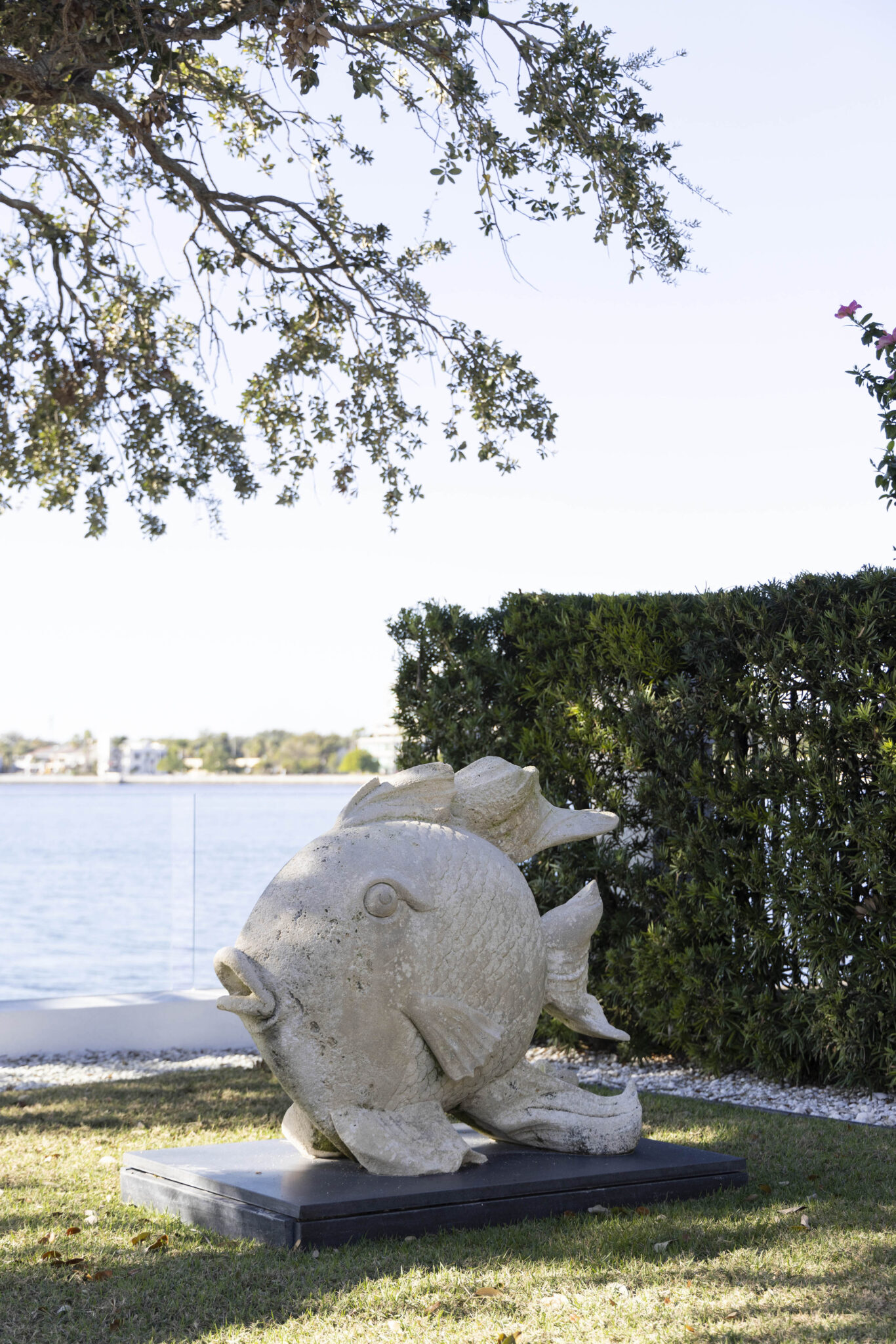

CC: That’s nice. Is your process getting to know your client prescriptive or more intuitive?
WC: It is intuitive because all people are different. I actually had an interview with two doctors this past Saturday. I said, “You know, like you have to do in your practice, you really have to disrobe in front of me. You have to tell us all; you have to unload about what you do and how you live.” Some people might not want to tell you their morning routines or their privacy or their bathing habits. We try to get to know them, try to get to know their routines, how they entertain, how they cook, how they use their kitchens, if they have large group or small groups over, and really get to know the kids. At Alys Beach, there are many legacy homes that may even pass down. So, you know, are they the family that has all the kids over to their house? Are they introverted or extroverted? We think it’s very important to get to know that client from the beginning. And we check and balance each other very well. You know, Sandi is really good at reading a client and converting that into space.
SC: I had just moved to the Panhandle from Minnesota after my high school graduation. My plans to attend the University of Minnesota quickly changed as my parents wanted to live in a warmer climate. My father being retired United States Air Force, remembered the beautiful Gulf Coast. My brother, Mike, was already at University of Minnesota and transferred to Florida State. I thought that would now be my path, however I met a friend whose father was another owner at the Spinnaker. One day he said come out to the beach to see the club. And that is where I met Walt who had just taken the Spring Semester off from Auburn to work at the beach. We became very good friends that spring and he went back to Auburn for Summer Option in Architecture. I would go up to visit him every weekend and wound up in with all the architecture students all day and night, just being supportive, talking and even helping with simple models and drawings. I loved it. And by the next year I applied to Auburn, after the Dean of Architecture said, “You should be doing this.” I just fell in love with it.
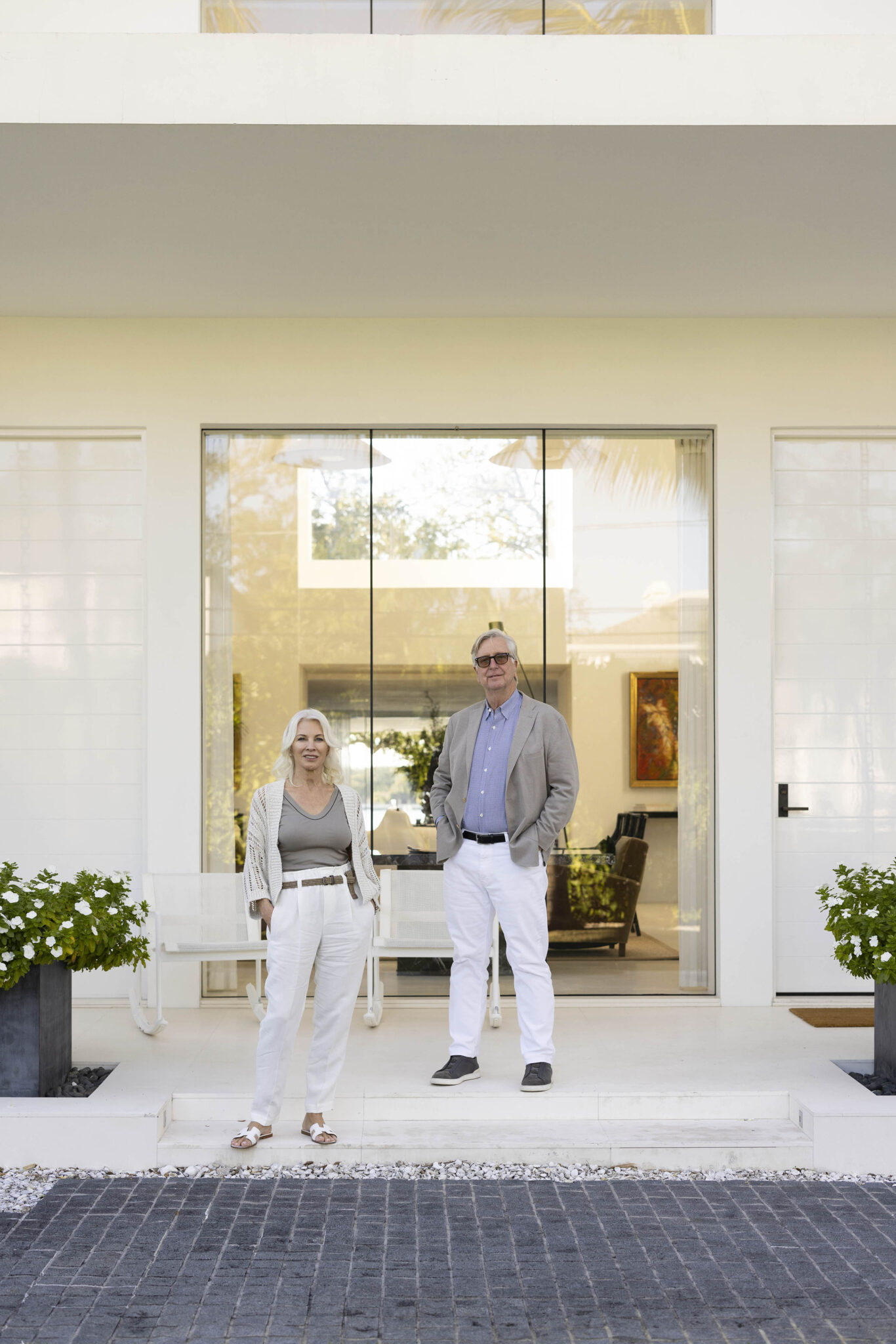

CC: It sounds like Walt had grown up around this. What do you think caused it to click for you?
SC: I had a close friend in Minnesota whom I admired. He was such a cool guy, very independent and unique. His father was an architect who designed these beautiful, modern glass houses on Lake Superior. This truly was an inspiration for me to be drawn to architecture and design.
CC: I read that you do assisted living homes and other nonresidential projects. When you’re going into a project, and you do such a wide range of things, how do you approach them similarly?
WC: Ninety-five percent of everything we do is residential-related. It is living. We design single-family homes, Alys Beach homes, homes here in Tampa, in the Bahamas, and all over. The senior living apartments, condominiums, and even hotels that we’ve designed are all about living. Whether you’re living there for one night, you’re vacationing there, or it is your permanent home. So they’re all related in that way. We really like to get into the psychology of how you live and how you use your spaces. And everybody’s different. People can walk in who don’t understand why they like something, but they really, really like it; it feels right. And what I say is you try to create that feeling of those spaces that those people enjoyed, and you try to interpret that and give it back to them in their new home. There’s a saying that I like—to have what is comfortable and familiar. So if you can design comfortable and familiar for someone, then I think you’ve succeeded.
CC: So comfortable and familiar is kind of a definition of home, or a way of thinking about home?
SC: I think you really start out with order and function with a home. You want to walk in and feel life without the clutter. It’s important to have some order in the spaces. And how it feels. When I was at Auburn, one of our professors talked about how a space should feel like your favorite hat. Which I love. I love hats. When we work with architects, our question is, ‘Can we get volume in spaces? And what shape is that volume going to be?’ So we start early on in the process with the architects and try to help with ordering those spaces and understanding what those are. There are some people who are really very particular about everything having its own space— like, even the tin foil.
WC: We designed a home down the street here with a client and he knew where every possession he owned would go and how he wanted it. From cell phones to keys to wallets to socks … Every door had individual dividers for all his possessions.
SC: You end up being more industrial, designing like that.
CC: That’s intense. I wish I were like that, but I’m always frantically looking for my keys. So, you think about practicality too, which is actually so important. Okay, what gives a home longevity; what makes it feel like it can last, what gives a space a sense of permanence?
SC: Longevity is so personal within the home. It has to be something that you have a memory of. It might be grandma’s china cabinet for some people; it could be a special chair. And quality, of course. Quality of everything.
WC: Quality of the design and materials. It is the thoughtfulness of how things go together so that they can be together one hundred years later. Also, going back to the comfortable and familiar—if it’s comfortable, familiar, and it functions well, why would you ever want to leave it? So, if you hit all of those key buttons, and you do it with a quality material that’s going to last, then you end up with something that could be permanent. And with the architecture, you have to be careful with styles. But as Sandi said, we design for our clients. If we’re in Alys Beach, we’re designing an Alys Beach home. You have to do each design the best—thoughtfully, functionally, familiar, comfortably—for them to last.
CC: And what about your surroundings? If I plopped you here in Louisiana, are you thinking like yourself ? Or are you thinking like someone in Louisiana?
WC: Context is very important. You start with context, if you can. There are times when that doesn’t work. A neighborhood like we’re in on Davis Islands – Tampa that was started in the ‘20s and now has extremely modern homes, Mediterranean homes, Watercolor-style homes, and they are side by side. We design these homes side by side—they’re very similar in size and footprint, and they’re extremely different. But they make up the fabric of what this neighborhood is. It evolved this way. You can live side by side with different styles. In a community with a prescribed design code like Alys, then everybody’s working with similar parts and pieces.
CC: Do you find those codes restrictive? Or how does it feel when you’re approaching a home in Alys? Specifically, what’s it like to design there?
WC: We’re fortunate enough to be accepted as an approved architect for Alys Beach. There is wonderful talent, just great architects, and we’re humbled to be a part of that group. Designing there, you start with a prescription. You’re told what to do to an extent. What Alys does extremely well in the planning is the interaction of the social environment through the common spaces—the parks, the shared amenities. That is where it does New Urbanism at its best. And the architecture is absolutely beautiful. You do have to work within a prescription, and for the most part, you might have 50 feet of architecture that is going to be shown to the world while the rest is private. We try to make the most of that, obviously, and we try to have the living space really present itself to the street. It’s challenging, it’s fun, and you have to be really creative and think about a lot of options to think it through. I enjoy that.
CC: I’ve never heard it said like that. A lot of the outdoor spaces for the houses in Alys face the interior so it is rather introverted and private. It’s interesting to think that the urbanism part lies in the common spaces. And the common spaces are so thoughtful and beautiful and full of art.
WC: Most of the housing codes, depending on where you are, forbid having a front porch. Which is somewhat the opposite of the concept of New Urbanism. But it works because of the wonderful planning that was done for the spaces when you come out of your home. My son was working on a project, and one of his quotes was—and I think Alys does this well—that living communities should focus on building social interaction through intentionally designed spaces and offerings. The intentionally designed spaces are the fabric of that community. And the houses being beautiful, the great architecture, makes it all work well together.
CC: So tell me about travel. You’re leaving for Paris tonight, Sandi. Do you travel often?
SC: There’s a big design show called Maison d’Objet, and it’s every year at this time. It’s something that I’ve always wanted go to and really never had the chance to. Our son is a sophomore in college in California, so we’re spending a lot of time going to California. Our daughter lives and works in Washington, D.C., and is just starting grad school at Georgetown. So we’re there a lot also.
WC: We’re fortunate to have a direct flight to Zurich from Tampa. Zurich is kind of like our European base. We love to fly in and out of there. At least in the last four or five years, we’ve taken two European trips a year. We go to Zurich, get acclimated, and from there, you can get anywhere. We spend most of our time in France and Italy and Spain.
SC: And Greece.
CC: I’m available for adoption.
WC: [Laughs.] We love Switzerland. I am a big driver. I will get in the car and drive around Europe. We love northern Italy, then to the south of France, which is probably our favorite, then back into Provence. This year is Portugal, Spain, Morocco, and France in the spring. In the fall, we’ll be back in Italy and France. Corsica is one of our favorite islands. We go there almost every year.
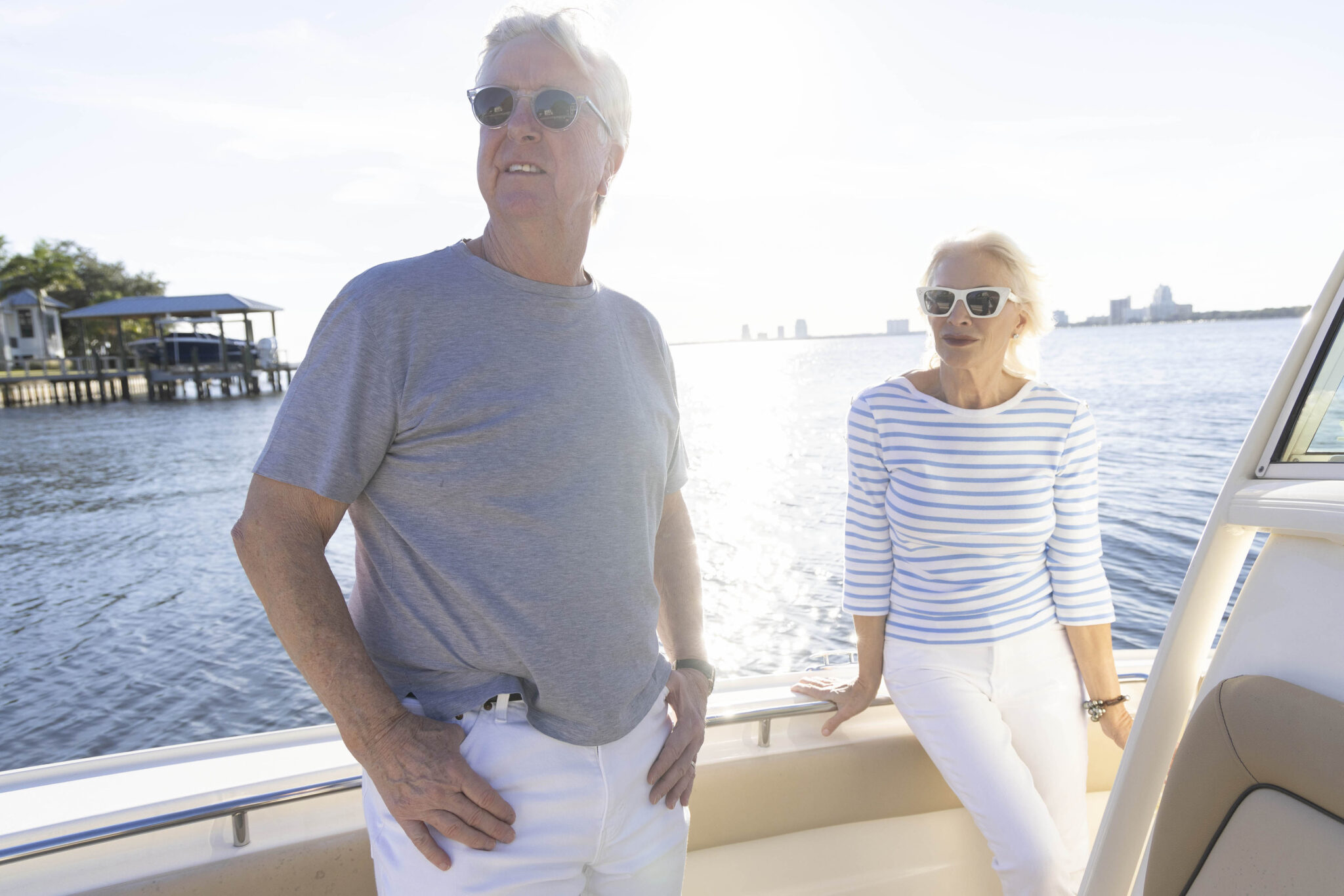

SC: This year we’ve been married thirty-nine years.
CC: Oh, congratulations. That’s wonderful. So what do you bring back from your travels to your work? I mean, beyond the obvious.
WC: For me, it’s culture. It’s not as much the buildings; it’s a feeling that I get about places I visit. I’m really big on sidewalk cafes, where there’s coffee in the morning, beer in the afternoon or dinner at night. I love to watch the people and see the culture. That’s my common space. I read other interviews and saw the question, “How do you relax?” And the answer is I never do. Or, “How do you unwind?” I do when I’m there, when I can finally shut down and allow myself to be immersed in the culture.
SC: Europe is magical. When I was in high school, I was an exchange student living with a family in Provence, and I always wanted to be back in Europe. When Walt and I got married and could afford it, I said, “We need to go to France.” And he just became a big fan of it.
CC: Let’s say you’re not sitting in a sidewalk cafe in Europe … In your day-to-day life, where do you get that connection to life and that energy?
WC: Mine is in my work. I hate to say that but I absolutely love what I do and I do it all the time. So I don’t call myself a workaholic because that sounds like something that’s bad. It’s good for me. I’ve got good friends my age that are retired, semi-retired, and I get a call, “Hey, you want to go fishing tomorrow? You want to play golf tomorrow?” And I say, “No, but I’ve got an opening on April 22nd.” My work comes first after my family. As a developer, I love the art of the deal; I love running a business; I really love design. So I just eat up every day. I come in on Fridays and walk through the office and I go, “Hey, it’s Friday, only two more workdays left in the week. Aren’t you happy?” That’s me. I’m just crazy that way.
CC: I mean, maybe crazy, but maybe just really lucky. You found work that suits you so well. Not many people can say that. What about you, Sandi?
SC: Everything he’s doing, I was doing. I’ve got the kids, too. And my mother actually was living with us for fifteen years, so she was really helpful with the kids. I was able to do so much more work because of that. The kids are now definitely self sufficient. With work, I’m not micromanaging the office or the designers in my office. I’m turning things more over to them.
WC: She’s empowering them. You’re empowering them to work on their own.
SC: Yes, now I’m trying to do more community service. I became a board member at The Tampa Museum of Art this year, which has been truly wonderful for me, as art is a passion of mine. This past year, I was asked to be on a team for The Leukemia & Lymphoma Society’s Man & Woman of the Year fundraiser. It was my mother who gave me inspiration for this, as she passed away from non-Hodgkin’s lymphoma.
WC: She made a mistake and raised more money than anybody in the Southeast so now everybody wants her to help them.
SC: It was a very personal mission. It felt good to bring my mother’s memory back. Helping those in need was important to her as well as it is for our entire family.
CC: And use your gifts to do so …
SC: You know, we’ve been locked up at a desk for thirty-something years so I’m enjoying some other things.
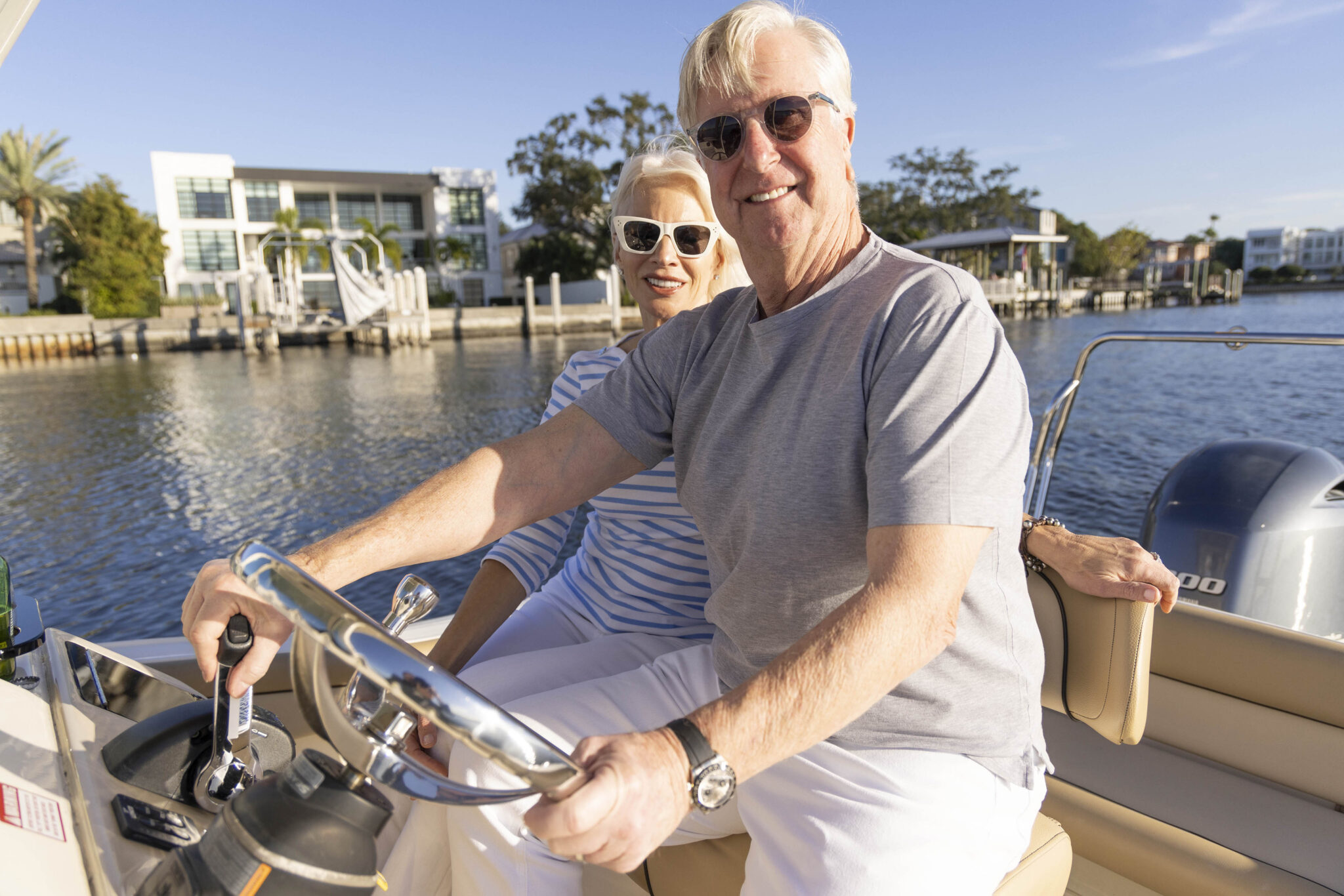

CC: That is great. Tell me about your mornings. Do you have a routine to start your mornings?
WC: I love this question. Well, her mom passed away several years ago, but her brother lives with us. We have a housekeeper and there’s always somebody here in this house. The only time that I ever am by myself is from about 4:45 to 6 a.m. I love the chilly weather in Tampa when it dips below 55 degrees because I can light the fire. So it’s fireplace and coffee and newspaper and just catching up on articles or doing my calendars or my five-year goals and things like that. Mornings are my time.
SC: And he doesn’t miss exercise any morning. He goes to bed early, then I like to kind of settle in and enjoy the house. My time is at night and his is in the morning.
CC: That’s perfect. So you each get your own. Especially when you’re working together and doing everything else together, I imagine you have to have some space that is just yours.
WC: Well, we’ve worked together from the day we met.
CC: You talked about art. Do you choose art for your clients? Or do you work with your clients to choose art?
SC: Art is interesting when you have a client. A lot of times, you can design the whole entire space, but when it comes to the art, they want to choose that. There are other times that I’m able to recommend the art, which is wonderful because I prefer to do that. I understand, too, that something about it is personal. I love quality art.
CC: Is there anything else?
WC: The two things I do really love are music and reading. Music is very important to me. A real quick story about how I think about music when I design. And really the time I listen to music a great deal is when I am designing. But at school, we were asked to design a building around Pachelbel’s Canon in D. It was my first introduction to classical music. I grew up in southern Alabama; I didn’t hear the classics. It’s the first time I was forced to listen and study a piece of music, and design a building around it. It was just so inspirational. It’s one of my favorite projects that I did. I was born in the South, so it’s the Allman Brothers and Lynyrd Skynyrd and Marshall Tucker. I grew up with four older sisters so it’s Elvis and the Beatles and Motown. When I have a client, I think of either their favorite music or what that client reminds me of and I listen to that music as I design. I enjoy that. And then I just love to read; I read myself to sleep every night. And that’s the only time I don’t read work books. I read novels—old classics to some of the modern writers of today.
CC: Do you have a favorite writer?
WC: I’ve read everything by John Grisham, Michael Connelly, Larry McMurtry, Ken Follett, Lee Child. Those are my go-to guys; every time a book comes out I’m snapping it up.
CC: Those are narratives too that are easy to get lost in, very plot driven. I can see that if you want a break at the end of the night, a separation from your life and work, those would do it.
WC: The rule is get rid of the phone an hour before you go to bed. Do not look at this phone before you go to bed. Get your mind out, clear it, read, sleep, and then wake up refreshed.
SC: We love the water too.
WC: We do love to drop a boat in the water.
SC: We had a bigger boat for many years and loved to take it to the Bahamas. We love the waterway, but then our children got so involved in what they were doing, their sports, and so now we’ve got something smaller for our son, but we take it out and just go from our backyard.
WC: We drop in and go to dinner and back instead of driving.
CC: What about your children? Are they following in your footsteps?
WC: Our son, Heath, is in the Iovine and Young Academy at University of Southern California. IYA, as it is called, is “Arts, Technology and the Business of Innovation.” We thought he would be designing heart valves or Porsche cars. As it is, he has teamed up with a 5th year architecture student there, and they have designed a new concept in affordable housing. I’m currently looking for a site for this project, which I am taking to development. Now he’s interested in urban design and the art of living. Elle, our daughter, is more a numbers and finance person. She graduated from Washington and Lee University in business and environmental science and is now in grad school at Georgetown University for a masters in real estate development (which is what I do also—it’s special to have her follow in my footsteps).
CC: It would be a dream, wouldn’t it. What else could you ask for?
WC: Just to have them close would be great.
CC: Fascinating life and career you’ve built. Good for y’all. I think a lot of people would find it very enviable. Enjoy it. And enjoy Paris, Sandi.
Sandi and Walt Chancey were the gracious hosts for Alys Beach’s newest event series, Alys on the Road. The Chanceys are not only contributing to the physical landscape of Alys Beach as architect and interior designer, they are also true ambassadors and community builders as homeowners. Alys Beach is grateful to the Chanceys for serving as hosts of our recent Alys on the Road Event in their home town of Tampa, Florida. To learn more about upcoming Alys on the Road events, email: [email protected]




